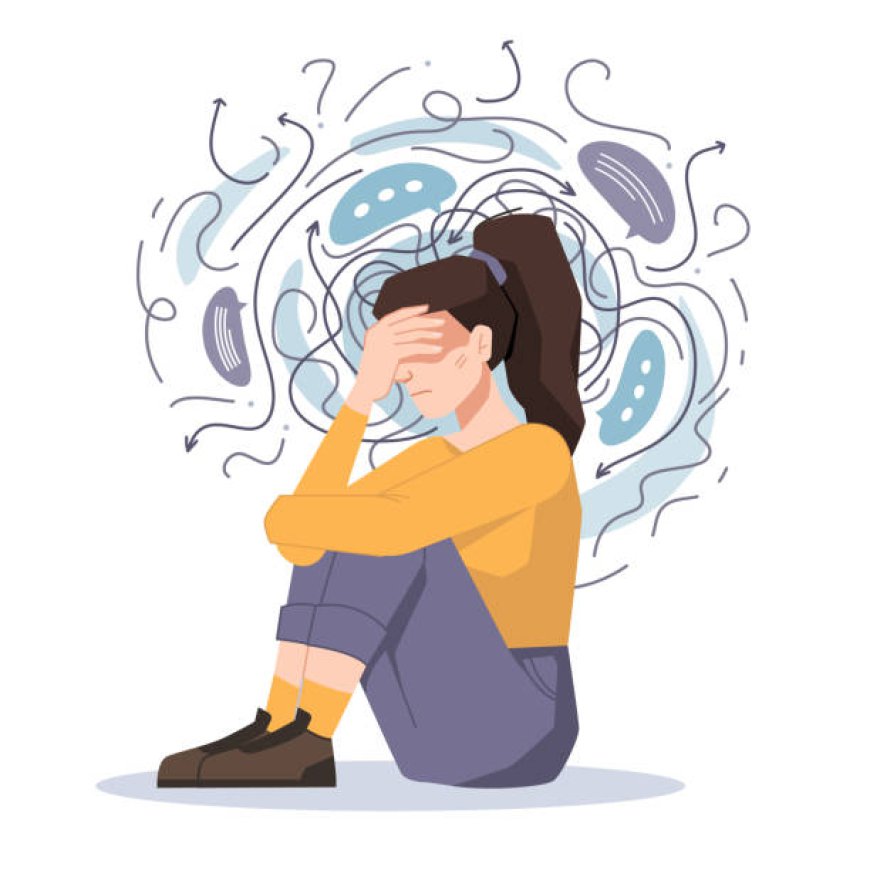Anxiety Unmasked: Recognizing Hidden Symptoms
Many times veiled in stigma and false beliefs, anxiety can take many different forms, some of which are not immediately noticeable.

Many times veiled in stigma and false beliefs, anxiety can take many different forms, some of which are not immediately noticeable. Although many people identify anxiety with trepidation or panic episodes, the condition's more subdued symptoms are frequently ignored or confused for unrelated problems. It is essential to comprehend these covert expressions in order to identify and address them early on. Let's explore the depths of anxiousness and reveal its hidden signs.
The Perfectionism Mask:
Perfectionism is a covert kind of worry. Although aiming for perfection might be commendable, the constant search for perfection frequently results from underlying worry. Perfectionists might display traits including excessive self-criticism, failure-apprehension, and difficulty delegating because of mistrust in other people's talents. This never-ending pursuit of perfection not only causes stress, but it also gradually lowers productivity and undermines self-worth.
The Indecision Facade:
Rather than being an indication of concern, indecision might masquerade as a personality characteristic. However, persistent indecision may indicate an underlying dread of making the incorrect decision and the ensuing fallout. This type of anxiety can cause a person to ruminate excessively and consider all conceivable outcomes, which can lead to a vicious cycle of analytical paralysis. As a result, even seemingly simple decisions become difficult, which causes annoyance and a sense of powerlessness.
The Physical Symptom Veil:
Many times, anxiety presents itself as a physical illness, causing people to seek medical care for symptoms for which there is no obvious physiological explanation. Headaches, tense muscles, gastrointestinal issues, and exhaustion are typical symptoms. These physical symptoms not only resemble a number of illnesses but also increase anxiety since people tend to see them as proof of a serious underlying disease, which feeds into a vicious cycle of concern and over-vigilance.
The Avoidance Cloak:
Many people who struggle with anxiety use avoidance behavior as a coping method. When it comes to facing concerns, taking on duties, or avoiding social situations, the avoidance trap provides momentary solace from discomfort. But in the long run, this avoidance feeds anxiety again by keeping people from learning coping mechanisms and reducing their exposure to perceived risks. As a result, people become caught in an avoidance loop, which exacerbates their anxiety symptoms.
The Mask of Sensitivity:
Anxiety might seem as agitation or irritation; it is not necessarily accompanied by overt worry or fear. Long-term stress and anxiety can increase emotional reactivity and cause anger that is out of proportion to the situation. Furthermore, people may find it difficult to control their emotions, which can result in emotional outbursts or problems in interpersonal interactions. As a result, this covert symptom exacerbates interpersonal relationships and has an adverse effect on the person's overall wellbeing, which feeds the cycle of suffering.
The Distraction Mask:
People may engage in activities or distractions as a coping mechanism for underlying anxiety in an effort to avoid facing their inner anguish. Distractions provide momentary solace, but they operate more like a Band-Aid remedy, covering up the underlying source of anxiety than dealing with it. Furthermore, an over-reliance on diversions may result in the abandonment of obligations, which over time may exacerbate anxiety as unsolved problems accumulate.
The Veil of Fatigue:
Anxiety is usually accompanied by sleep disruptions, although these are often treated as symptoms rather than causes. Anxiety may be the cause of problems falling asleep, keeping asleep, or having restless nights. Furthermore, the ensuing lack of sleep makes anxiety symptoms worse, producing a vicious cycle that is detrimental to both mental and physical health. Therefore, treating sleep problems is essential to effectively managing anxiety.
Exposing Anxiety:
Finding the right assistance and uncovering anxiety begin with identifying these covert signs. A variety of interventions, including therapy, medication, lifestyle modifications, or a mix of these, can assist people in regaining control over their lives and experiencing symptom relief. Furthermore, encouraging candid communication and lessening the stigma associated with mental health empowers people to ask for assistance without feeling ashamed or judged.
Removing the Layers:
Knowing that anxiety can appear in a variety of ways enables people to look past the surface symptoms and identify the more subtle ones that are frequently missed. Individuals can manage their anxiety holistically by understanding how behavioral, emotional, and physical symptoms are interrelated. This could entail developing self-awareness, putting mindfulness practices into practice, and taking part in self-care activities that support mental health.
Breaking the Stillness:
By speaking up about anxiety, people can reveal their problems without worrying about being judged or stigmatized. We establish a secure environment for candid conversation and de-stigmatize getting treatment for mental health problems by promoting a culture of kindness and support. By working together, we can break down the obstacles that keep people from getting the help they deserve and need as they pursue recovery and wholeness.
Conclusion
In summary, worry presents itself in a variety of ways, some more overt than others. We can help people dealing with this widespread illness feel more understood and empathetic by bringing attention to its hidden symptoms. People can start the process of healing and resilience by removing the layers of anxiety through early detection, support, and intervention.
